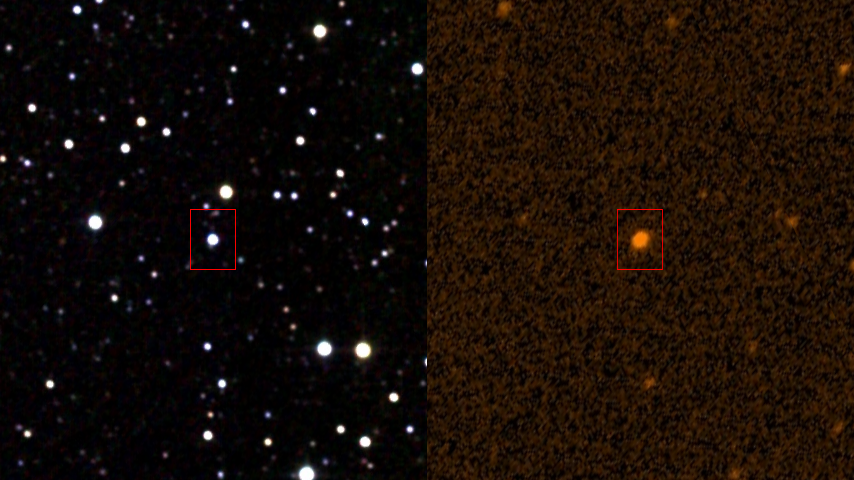New Sky Catalog Reveals Most Likely Sites for Alien Technology
“Exotica” lists phenomena for which conventional natural explanations don’t seem to work wellWe’ve been looking at reasons why we don’t see extraterrestrials, even though many scientists are sure they must exist.
One enterprising research group has now assembled Exotica, a catalog of strange phenomena in space, which might help us search more efficiently. If extraterrestrials exist and are technologically advanced, they would leave a “technosignature,” which might at first only be seen as a
strange phenomenon in space:
Breakthrough Listen, the initiative to find signs of intelligent life in the universe, today released an innovative catalog of “Exotica”—a diverse list of objects of potential interest to astronomers searching for technosignatures (indicators of technology developed by extraterrestrial intelligence). The catalog is a collection of over 700 distinct targets intended to include “one of everything” in the observed universe—ranging from comets to galaxies, from mundane objects to the most rare and violent celestial phenomena.
Janet Wootten, Breakthrough Intiatives, “Breakthrough Listen releases catalog of “Exotica” – objects of interest as “technosignatures”” at Phys.org (June 23, 2020)
One focus of the catalog is objects in space with extreme properties, “hottest planet, stars with unusually high or low metal content, the most distant quasar and fastest-spinning pulsar, and the densest galaxy.”
Sure, something like that could be a random effect. But maybe not. For example, if you encountered an abandoned house out in the country, you might be surprised by a lack of mice. A random effect? Maybe. But what if you learn that a colony of cats lives in the basement? One thing’s for sure. You could only find out the most likely reason why mice don’t live there by investigating the basement.

A second focus is “enigmatic targets whose behavior is currently not satisfactorily explained.” For example, there is Tabby’s Star, pictured above in infrared and ultraviolet, whose behavior is so strange that NASA offers nine possible explanations, including an “alien technosignature” (evidence of advanced alien activity). Why this star?:
Tabby’s star, a yellow-white dwarf star located around 1,280 light-years away, was discovered in 2015, and since then it’s been a real head-scratcher. Its dimming is completely random. The depth of the dimming varies, too – it’s dimmed by up to 22 percent, and last year was caught dimming by just 5 percent.
This behaviour pretty much rules out planets; when an exoplanet passes between a star and Earth as it orbits, it will dim the star by a tiny amount – 1 percent or less – at regular intervals.
Michelle Starr, “There’s a New Explanation For Mysterious Tabby’s Star: A Melting Ploonet” at ScienceAlert
Here’s a 2017 TED talk on Tabby’s Star’s wobbles, which evaluates the case for the wobbles as an alien technosignature:
Most astronomers don’t think Tabby’s Star’s remarkable eccentricities are evidence of alien activity. But they are the type of pattern that might point to alien activity. Sudden changes in regular pulse patterns might be due natural causes or to intelligent agents’ communications or other activity.
For example, we might encounter pebbles on a beach that appear to be positioned in a very odd way. Is that a one-in–a-zillion random distribution? Or it is a message in a code we don’t know?
Once we are into those “zillion” odds, it’s sometimes hard to tell. Paleontologists face this exact problem in a much more conventional situation: Was an oddly-shaped rock chipped by a human two million years ago but then discarded? Or is it just an oddly-shaped rock?
If the paleontologists later find charred remains of fires and human bones nearby, they will, of course, look with much more interest at oddly-shaped rocks in the vicinity. “Design inferences,” whether on earth or in space, require further investigation. We are trying to determine whether patterns are most probably 1) random, 2) orderly but natural, or 3) the result of purposeful activity or communications. That’s really what the hunt for extraterrestrial intelligences is doing.
Anyway, here’s the Exotica catalog.
And here is a selection from what science buffs have been saying about Exotica:
Various classification schemes have been attempted before, but nothing on this scale. In total, Lacki and his colleagues identified 737 distinct astronomical objects, some very well understood and others in desperate need of scientific attention. While the catalog was being compiled, and as the number of targets grew and grew, Lacki became concerned with the ballooning number, simply for purposes of practicality.
George Dvorsky, “Scientists Made a List of Every Place Aliens Could Be Hiding” at Gizmodo (June 23, 2020)
In a press release from Breakthrough Initiatives, lead author of the Exotica catalog, Dr. Brian Lacki, said that “Many discoveries in astronomy were not planned.” He added that “Sometimes a major new discovery was missed when nobody was looking in the right place, because they believed nothing could be found there.” Lacki notes, for example, that exoplanets may have been detected before the ’90s if astronomers had been looking for star systems dissimilar to our own.
Matthew Hart, ““Exotica” Catalog Lists 700 Places Aliens Could Be Living” at Nerdist (June 25, 2020)
At Air & Space, experts were are asked to imagine a scenario that would be clear evidence of alien activity. One such scenario was this:
An alien megastructure could make stars appear unusually bright. One imagined megastructure—a sphere or ring of giant panels built around stars to capture as much of their energy as possible—is named the Dyson Sphere for the physicist Freeman Dyson who popularized the concept in a 1960 Science article. “One should expect that, within a few thousand years of its entering the stage of industrial development, any intelligent species should be found occupying an artificial biosphere which completely surrounds its parent star,” he wrote.
Giant structures around a star would absorb a lot of energy, not all of which could be used by the civilization that built them. The rest would be radiated into space as heat, which would look especially bright in the infrared.
Damond Benningfield, “The Weirdest Objects in the Universe” at Air & Space (December 2020)
A Pennsylvania State astronomer, Jason Wright, investigated a particular infrared galaxy, WISE J224436.12 and “In a 2015 paper about candidate homes for extraterrestrial civilizations, Wright and colleagues gave it an ‘A,’ writing that it ‘deserves further study to understand its superlative nature.’”
and
Even if you are not an avid believer in intelligent aliens, the catalog makes for an interesting read based on the astounding variation and abundance of astronomical objects compiled in one place. Though it is intended to help scientists keep an open mind about potential sources of technosignatures, it is also an impressive record of humanity’s observational achievements over the past several millennia.
Becky Feirreira, “Scientists Cataloged ‘One of Everything’ in the Universe to Hunt Aliens” at Vice (June 23, 2020)
You may also enjoy:
Particle physicist offers 75 reasons we don’t see aliens. But Oxford’s Future of Humanity Institute gives high odds that we are the only intelligent beings in the galaxy. No matter whose theory about why we don’t see extraterrestrials is right, we are bound to go on wondering and searching.
and
The aliens exist—but evolved into virtual reality at a nanoscale. That’s the Transcension Hypothesis, the latest in our series on science fiction hypotheses as to why we don’t see extraterrestrials. On this view, after a Singularity the ETs become virtual intelligences, exploring inner space at an undetectably small scale. (This link takes you to nine other hypotheses.)
